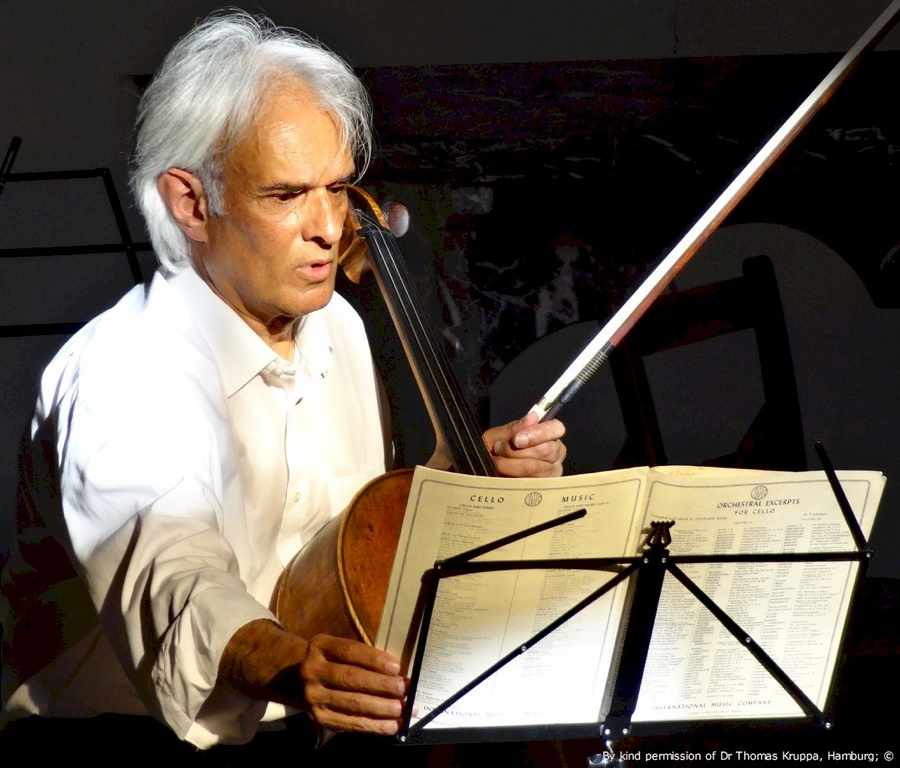Rohan de Saram was born to Ceylonese parents in Sheffield, England. At age eleven he studied with Gaspar Cassadó in Siena and Florence. At the age of 16 he was the first winner of the Guilhermina Suggia Award, enabling him to study in the UK with Sir John Barbirolli and in Puerto Rico with Pablo Casals, who said “There are few of his generation that have such gifts”. In the following year he won a Harriet Cohen International Music Award.
Dimitri Mitropoulos described him as “a rare genius…a born musician…an amazing…cellist”, and invited Rohan to give his Carnegie Hall debut in 1960 with Stanisław Skrowaczewski and the New York Philharmonic, playing Khachaturian‘s Cello Concerto. Primarily a performer, he has lived in London since 1972, and has taught at Trinity College of Music. He was a member of the Arditti Quartet and has toured and recorded with Markus Stockhausen’s “Possible Worlds” group and worked personally with Zoltán Kodály, Francis Poulenc, Sir William Walton and Dmitri Shostakovich. He has performed with the major orchestras of the world with conductors such as Barbirolli, Sir Adrian Boult, Zubin Mehta, Seiji Ozawa and William Steinberg.
He has premiered works by Luciano Berio, Bose, Benjamin Britten, Sylvano Bussotti, John Cage, Sir Peter Maxwell Davies, Philip Glass, Sofia Gubaidulina, Paul Hindemith, Mauricio Kagel, György Ligeti (Racine 19), Conlon Nancarrow, Henri Pousseur, Wolfgang Rihm, Jeremy Dale Roberts (Deathwatch Cello Concerto), Alfred Schnittke, Iannis Xenakis (Kottos) and Toshio Hosokawa (Chant for cello and orchestra). Berio was so impressed by his performance of Il Ritorno degli Snovidenia that he wrote Sequenza XIV (2002) for de Saram, incorporating drumming on the body of the cello drawn from de Saram’s skills with the Kandyan drum. The work was given its world premiere by de Saram who also made the premiere recording. He plays the standard classical cello works, including the great concerti, sonata cycles and Bach‘s six Solo Cello Suites.
He has recorded Vivaldi‘s Sonatas, Edmund Rubbra‘s Soliloquy for cello and orchestra, Britten’s Cello Suites No 1-3, John Mayer‘s Ragamalas and Prabhanda, Xenakis’ Kottos and Elliott Carter‘s Figment I and II, works by Bernd Alois Zimmermann, Peter Ruzicka, Gelhaar, Pröve and Steinke, Harmonic Labyrinth with Preethi de Silva, and the first of two volumes of de Saram in Concert featuring performances of the Kodály Sonata for Solo Cello (his score includes Kodály‘s hand-written praise), together with the Rachmaninoff Cello Sonata, in which he is accompanied by his brother Druvi de Saram.

